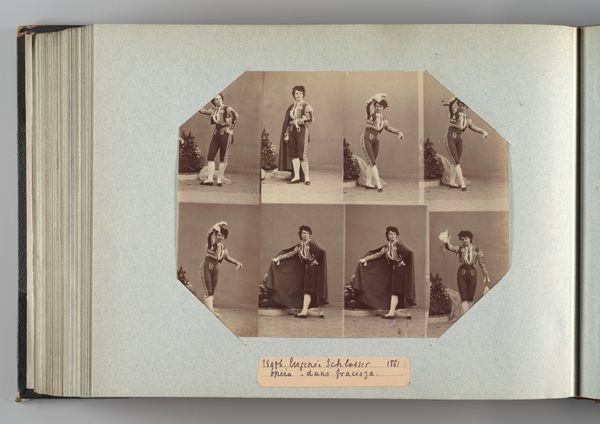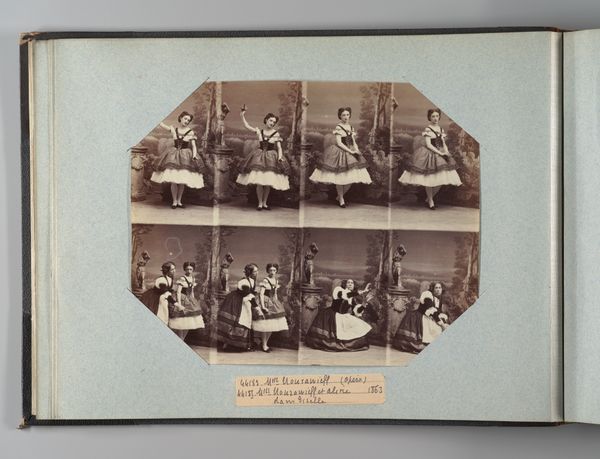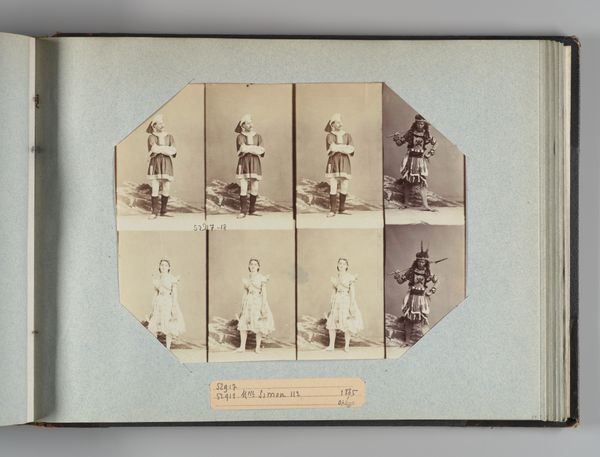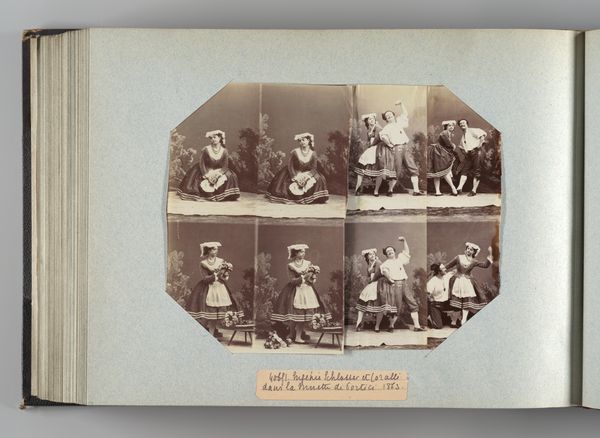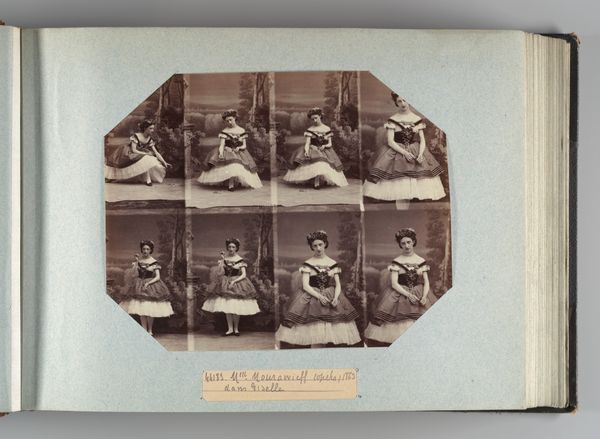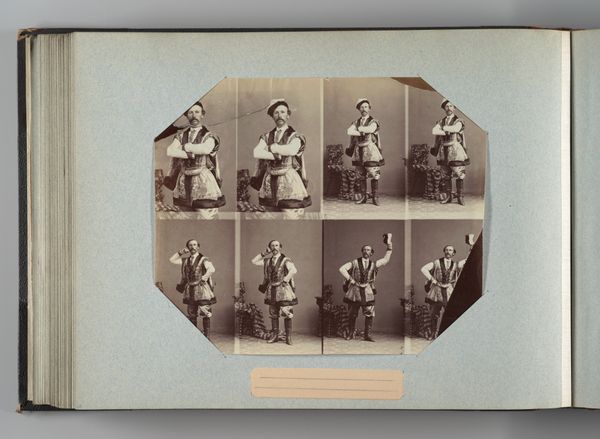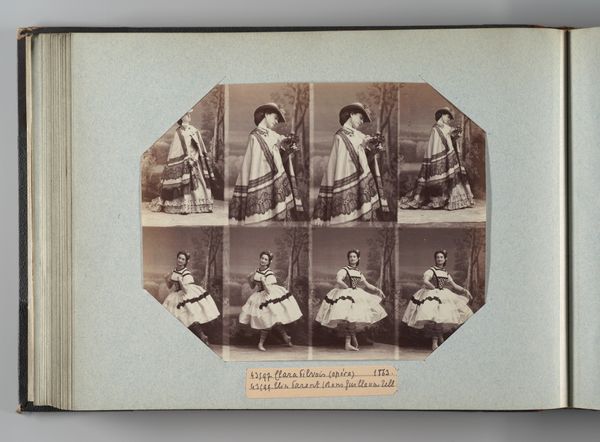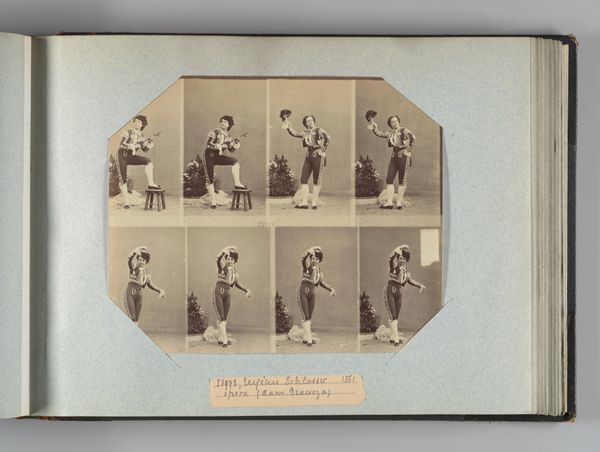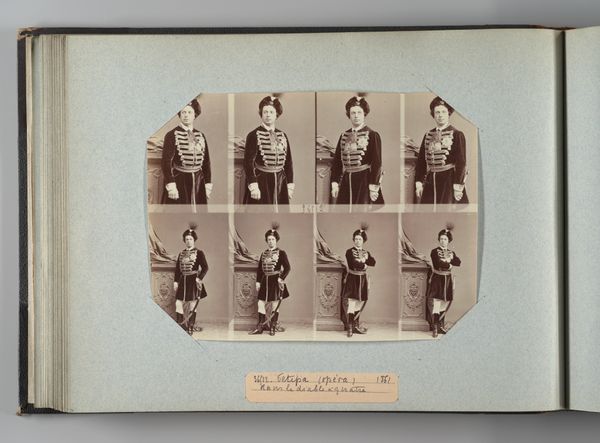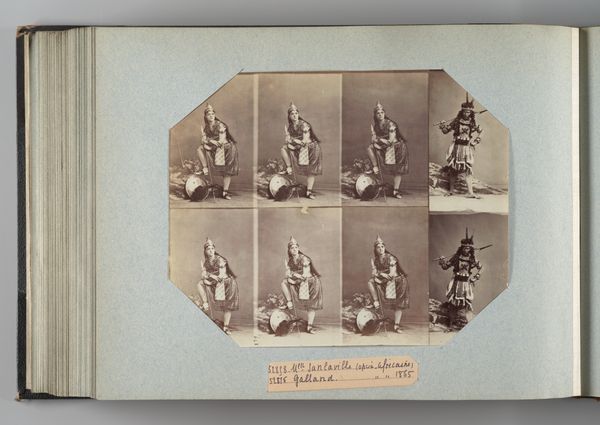
performance, photography, albumen-print
#
portrait
#
performance
#
photography
#
albumen-print
Dimensions: Image: 7 3/8 × 9 1/4 in. (18.8 × 23.5 cm) Album page: 10 3/8 × 13 3/4 in. (26.3 × 35 cm)
Copyright: Public Domain
Editor: This is a photo album page from 1863 by André-Adolphe-Eugène Disdéri, featuring albumen prints of performers titled "Mlle Ribert; Gabiot; Perrot; Lecerf". The outfits are definitely… striking. What do you see in this work? Curator: This piece gives us a window into the representational practices of 19th-century opera and theatre, but I'm particularly interested in *how* these identities are being presented and circulated through photography. How are gender and class being performed here, both onstage and through the photographic process itself? Editor: Performance is definitely at the core here, considering that they're performers! It’s just fascinating to think about their costumes, the social meaning of them, and how it was captured by Disdéri. It is, I think, an early form of what we call media spectacle. Curator: Exactly! Disdéri was a master of celebrity portraits, mass-producing images like these and contributing to a burgeoning culture of celebrity. So it isn't just about the costumes, it's about visibility and the commodification of identity in the photographic age. The gaze of the audience is constructed through both theater and print media. Editor: The commodification of identity... that makes me think about how these images were consumed, how that consumption reinforced gender and social roles in a pre-digital world. Do you see anything else in how identities were produced, consumed, or challenged? Curator: Well, think about the controlled poses, the staged backdrops. All those point to the artificiality of the image itself, a constructed reality that invites us to question what’s “real.” Disdéri gave us not only images of people, but an image of a time. This, in turn, can become a document for analyzing cultural constructs. Editor: So by studying these photographs, we learn as much about the social constructs as we do about the people themselves. I hadn't considered how constructed the image is and how much we can take away from understanding the artifice. Thanks! Curator: Exactly. Now imagine where we'll be in another hundred and fifty years.
Comments
No comments
Be the first to comment and join the conversation on the ultimate creative platform.

